How To Help a Cat Lose Weight

Did you think dieting is only challenging for humans? Cats struggle to lose weight too! If you're giving your little feline a once over and believe that he may need to shed off a few pounds, then read on.
Has your cat been looking a bit plump lately? If your cat's been looking plump, but you're not so sure if he's overweight, visually grade your cat using the Body Condition Score. It's a simple three-step system recommended by the Cornell Feline Health Center.
- Rib Check: Run both hands, palms down, across both sides of your cat's rib cage.
- Profile Check: Look at your kitty from the side.
- Overhead Check: Stand above your cat and look down.
If you can't feel your cat's ribs or see their waistline, then your cat is probably overweight. To confirm whether your cat is overweight and to learn about their ideal weight, bring them to the vet for an overall wellness check and to rule out any underlying reasons for the weight gain.
WHY IS MY CAT OVERWEIGHT?
If you're wondering why your cat may have gained weight, despite feeding him the recommended amount of food, there may be other reasons.
For example, cats become overweight when they consume more calories than they use. Has your cat been moving and exercising less? If so, these excess calories are stored in the body as fat and make your cat gain weight.
Also, overweight kittens tend to be stout as adult cats. Keep in mind that the number of fat cells a cat has is determined when it's a kitten. Once these cells are formed, they're permanent. Cats that have been overweight since they were kittens struggle more to lose weight during their adulthood. Thus, it's crucial to prevent obesity during your cat's younger years.
DANGERS OF BEING OVERWEIGHT
If your cat is overweight, he or she risks a shortened lifespan. Overweight cats are also at risk for a variety of health problems and severe medical conditions. When a cat is obese – which can caused by as little as 2-3 pounds above their ideal weight – it's not so much a question if he will develop health problems, but how soon and how serious. Some of the common disorders related to excess weight include:
- Skin infections
- High blood pressure
- Heart disease
- Immune suppression
- Type 2 diabetes
- Arthritis
- Increased frequency of joint injuries
- Some forms of cancer (especially intro-abdominal cancers)
Aside from the medical conditions above, overweight and obese cats usually have shorter lives than healthier, fitter cats. They also tend to lie around more, are less energetic and less playful with other cats.

BENEFITS OF WEIGHT LOSS
Losing weight is not just about improving your cat's shape, but rather, it improves the quality of your cat's life in more ways than one. Weight loss improves cardiovascular function, decreases the stress on joints, enhances athleticism, and reduces or eliminates the use of certain medications and illnesses.
STARTING THE WEIGHT LOSS JOURNEY
Just like with humans, getting your cat to start their weight loss journey can be rough. But you don't have to start all at once. You can do small things first like consume less calories, burn more calories with short walks, and not give in to those sweet kitty eyes when they beg for that midnight snack. When its time to get serious, be sure to consult your cat's vet before changing their diet and other lifestyle habits.
DISCUSS SPECIFICS WITH YOUR VET
A physical examination is necessary, and your vet will likely recommend diagnostic testing. An assessment will ensure that your cat doesn't have any underlying diseases before making significant changes to his lifestyle. Cats may also need special or prescribed diets, depending on the results of the examination.
ESTABLISH A FEEDING SCHEDULE
A crucial rule for your cat's successful weight loss journey is never to withhold food or feed him less, otherwise known as crash diets. Gradually introduce a new diet to your cat and allow three weeks for the transition.
- Start with offering small amounts of the new diet in a separate bowl.
- Mix 1/4 of the new diet with 3/4 of the old diet for two to four days. Increase to hand-and-half for another two to four days, and so on.
A regular feeding schedule is necessary, but use one that works for your cat. Some cats are more used to eating one or two meals a day, while others prefer smaller but more frequent meals. Observation is vital before establishing a feeding schedule because you'll have better results if you know when your cat expects to eat.
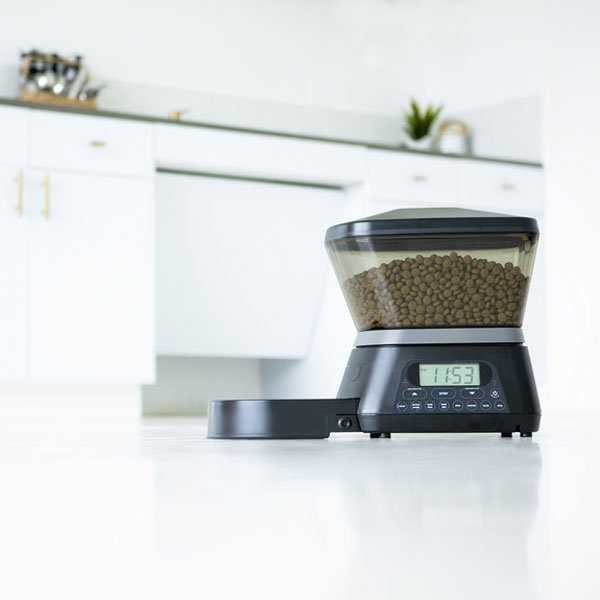
If the new feeding schedule mixes in with your work or school schedule, consider purchasing an automated pet feeder like the GAMMA2 Nano (shown right). These allow your to set up times for the feeder to dispense a certain amount of food automatically. That way, you don't have to be home all the time to feed the cat. Instead, you can continue living your life, and the cat can still get fed.
EXERCISE
It's important to keep your cat active and moving. Don't worry, there are no workout routines necessary. While it can be challenging to motivate your cat initially, no sane animal says no to a good round of play. Using cat exercise toys like cat balls, cat wands, feather teasers, and more can be useful. Catnip can also be used to encourage playtime. It's not important what you use to get your cat moving. What's important is that you get your cat moving for a least 15 minutes, twice a day, as it not only helps with weight loss, but also increases his metabolic rate, and helps him expend his energy and retain lean body mass.
OTHER TIPS
- Pet your cat or play with him whenever he begs for food outside of meal times. Affection and playtime are always great substitutes for food.
- Feel small meals frequently. No matter how much they beg for food, do not give in once your cat reaches its daily intake of food.
- Offer fresh water instead of food. Even humans tend to think that they're hungry when in fact, water can satisfy the craving.
Remember to reassess your cats diet and exercise once a month, until he's reached his ideal weight. If what your doing isn't working, revisit your vet. They can help you determine next steps, and if further dieting and exercising is needed.
Sources:
- https://gallant.com/blog/18-easy-ways-help-cat-lose-weight/
- https://www.prestigeanimalhospital.com/services/cats/blog/cat-obesity-how-help-your-cat-lose-weight
- https://www.hillspet.com/cat-care/healthcare/how-to-help-your-cat-lose-weight
- https://www.petsbest.com/blog/how-to-help-cat-lose-weight/
- https://vcahospitals.com/know-your-pet/creating-a-weight-reduction-plan-for-cats
- https://www.petsbest.com/blog/how-to-help-cat-lose-weight/
Previous article
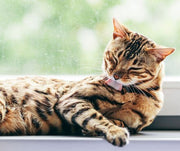
Next article
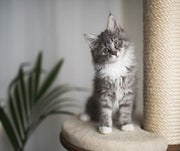
Related posts
View all-
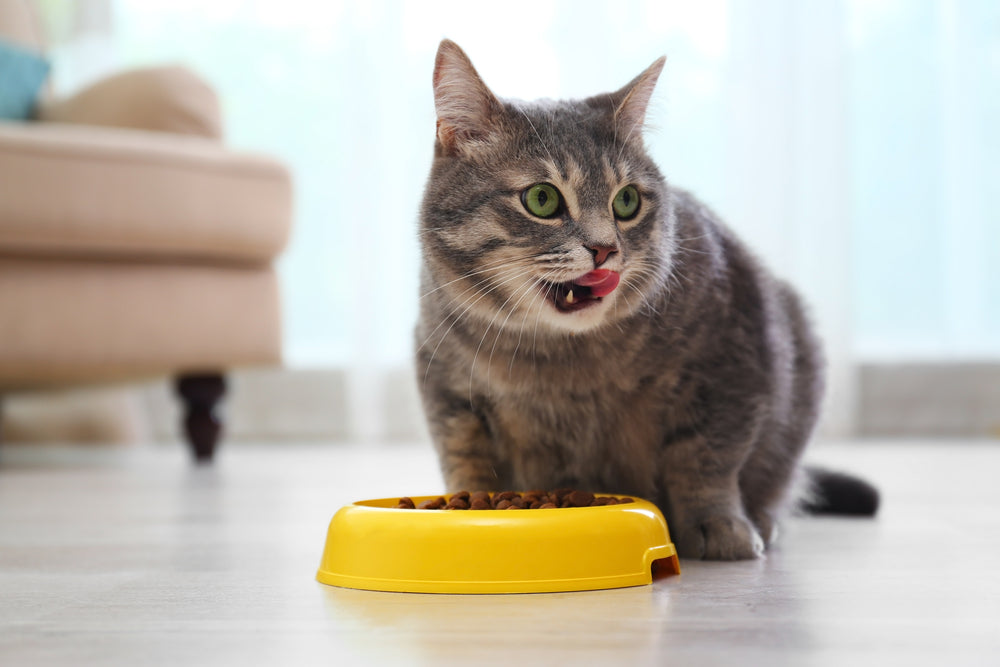
Wet Vs. Dry Cat Food: Which is Better?
As a caring cat owner, you always want the best for your furry friend, especially with their food. You typically have two choices: dry cat food in a bag or canned wet food. Whether you've just brought home a new kitty or are looking to transition to a new food, the decision process can be overwhelming, and understanding the impact of each on your cat's diet is essential. Read Article -
Celebrate National Pet Week: Fun Ideas to Celebrate with Your Pet
National Pet Week is right around the corner, so it's time to plan how you're going to celebrate! While we're sure you celebrate your pet all day every day... Read Article -

5 Simple Tips to Make Sure Your Cat Drinks Enough Water
Ensuring your cat stays hydrated is important, but it can be challenging since many cats don't drink enough water. Dehydration can lead to kidney disease and other health issues. Fortunately, you can encourage your cat to drink more with a few simple changes. Read Article



